Nothing is more frustrating than splitting wood, whether you are nailing, drilling, or screwing. You start questioning yourself as a DIYer: Should I sell all my tools and live a peaceful life? Don’t worry; it’s not the end of the world.
Even, It’s one of the most common issues every woodworking enthusiast faces. In this comprehensive guide, we will dive into the nitty-gritty of how to stop wood from splitting when screwing. So grab your tools and nail this problem without being screwed!
How to Stop Wood Splitting When Screwing – Guide
1. Choose the Right Screws
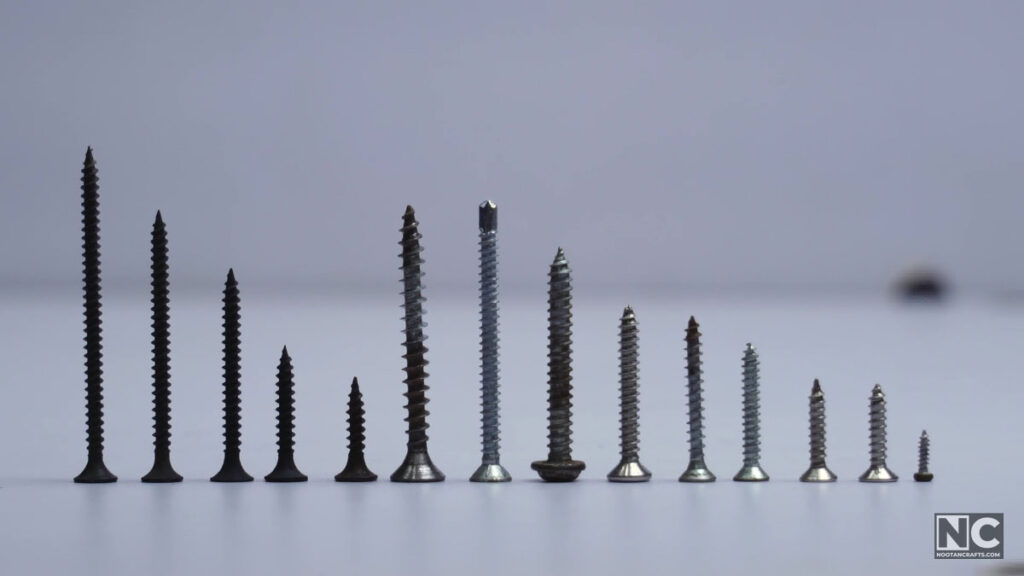
That’s right – selecting the right screws can make a world of difference. So choose wisely!
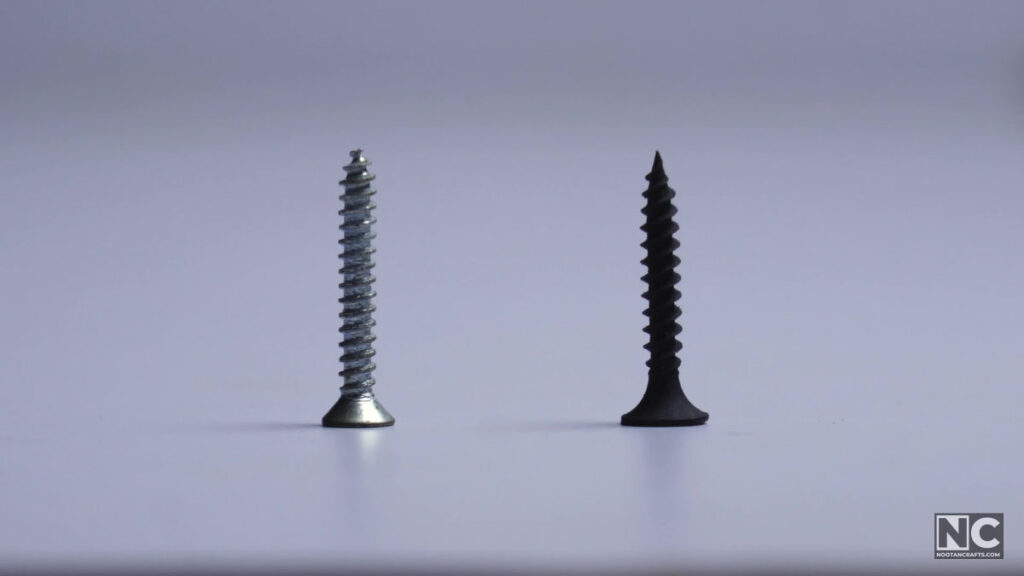
Tip: Screw with a finer tip is more likely to cause wood split because they separate wood fibers rather than cutting. That’s why you have seen so many videos in which people cut the screw’s sharp tip before driving into the wood.
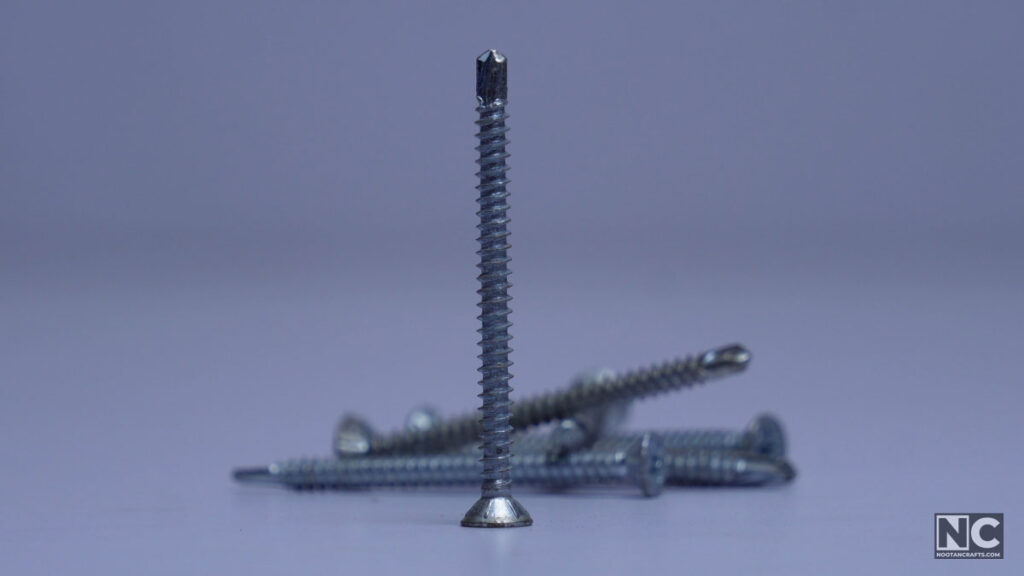
I like to use use the self-drilling screw; they are the best. You don’t need to do anything at all. They can even make a countersunk hole itself, which is cool, right?
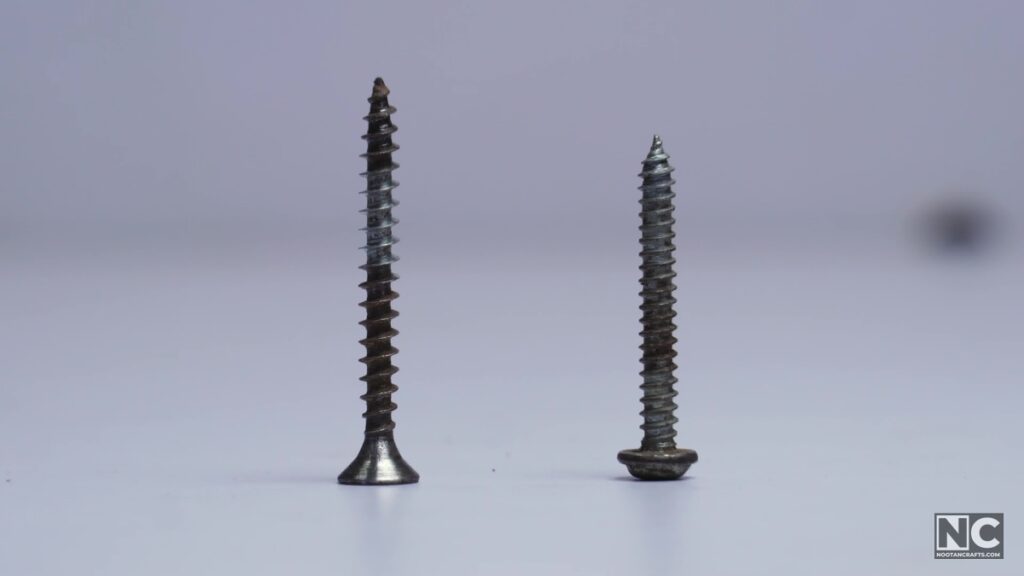
Thread: If you’re working with hardwoods, screws with finer threads are less likely to cause splitting. For softer woods, coarse-threaded screws can be used.
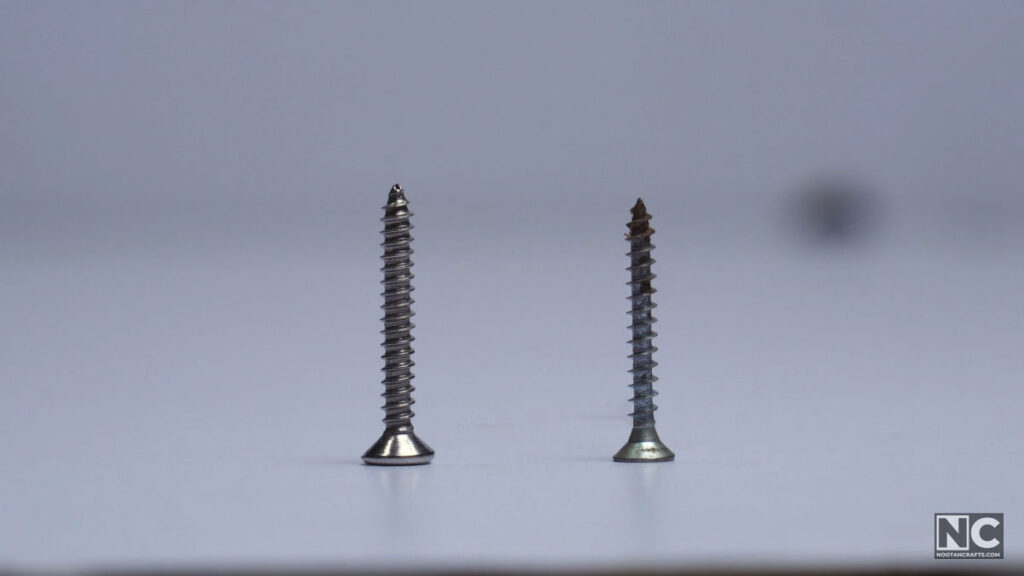
Diameter: It’s common sense. If you use screws that are too thick can put extra stress on the wood, increasing the risk of splitting. So, always use the appropriate size screw or nail according to the project.

Length: Ensure that the screw length is appropriate for the task. The screw should penetrate the second piece of wood fully but not extend too far beyond it, as this can also lead to splitting.
2. Make A Pilot Hole
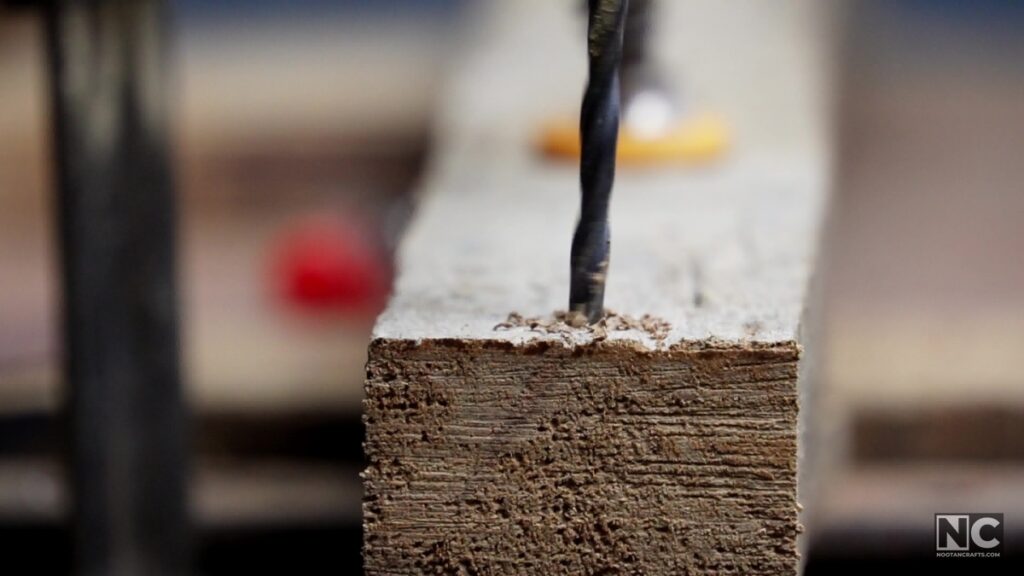
Pre-drilling your holes is one of the most effective ways to prevent wood splitting. Always use a slightly thin drill bit than the screw’s to create a pilot hole. It provides a clear path for the screw, minimizing the wood-splitting risk under pressure.
When creating pilot holes, it’s essential to consider the depth. Pilot holes that are too shallow may not provide enough room for the screw to grip securely, while overly deep pilot holes can weaken the wood. Here’s how to determine the proper pilot hole depth:
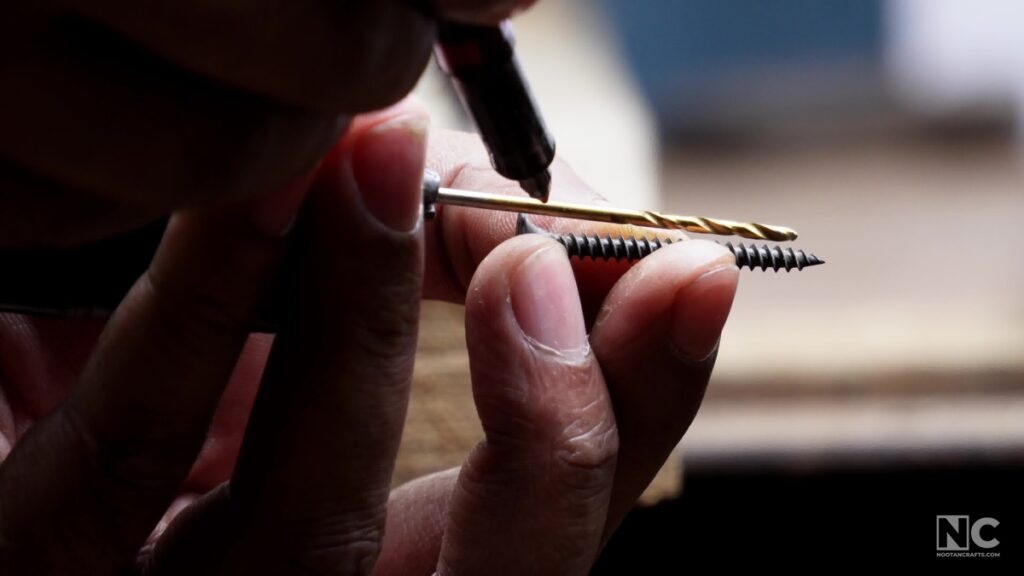
Measure Screw Length: Measure the length of the screw (excluding the screw head) and mark the drill bit accordingly. The pilot hole should be just deep enough to accommodate the screw without bottoming out.
3. Lubricate Your Screws

Believe it or not, some lubrication can do a miracle to keep wood intact when screwing. Rub some soap, wax, or even a specialized wood screw lubricant on your screws before driving them in. It reduces friction, making it easier to insert the screws without causing damage.
You can also use wood glue, which makes the joint even solid and serves the lubrication purpose.
4. Go Slow and Steady
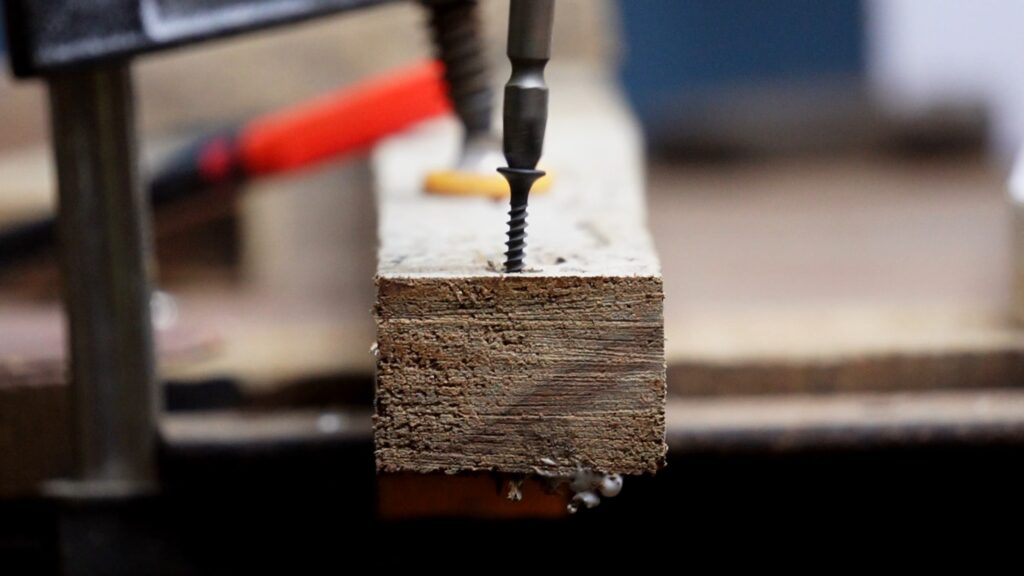
Avoid excessive force or speed when driving in the screws; patience is the key here. Going too fast can cause the wood to splinter, especially near the edges. Keep enough pressure so the driver bit doesn’t slip from the screw head, and let the screw do the work.
5. Use a Clamp

If you’re attaching two pieces of wood, use a clamp to hold them firmly in place before screwing. It prevents the wood from shifting during the screwing process, reducing the chances of splitting.
It can also be used when screwing at the edge of wood. Clamping provides a compressed force on the wood, which forces the screw to make space in the fiber rather than splitting them.
6. Mind the Grain
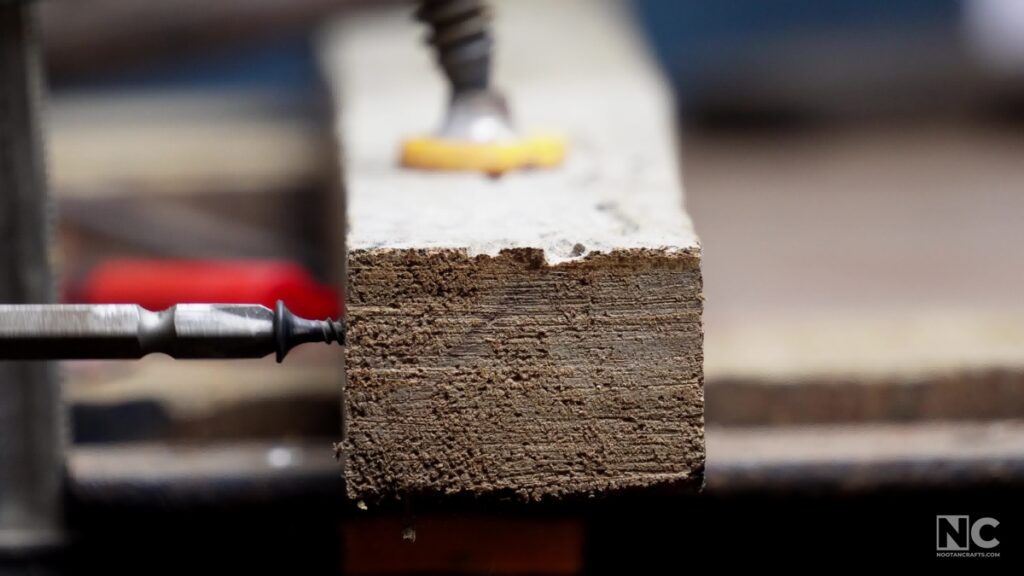
Always pay attention to the direction of the grain when screwing.
When you drive a screw parallel to the grain, it’s less likely to cause the wood fibers to separate. In contrast, driving screws perpendicular to the grain increases the risk of splitting, as the screw is essentially trying to cut across the wood fibers.
7. Countersink Your Screws
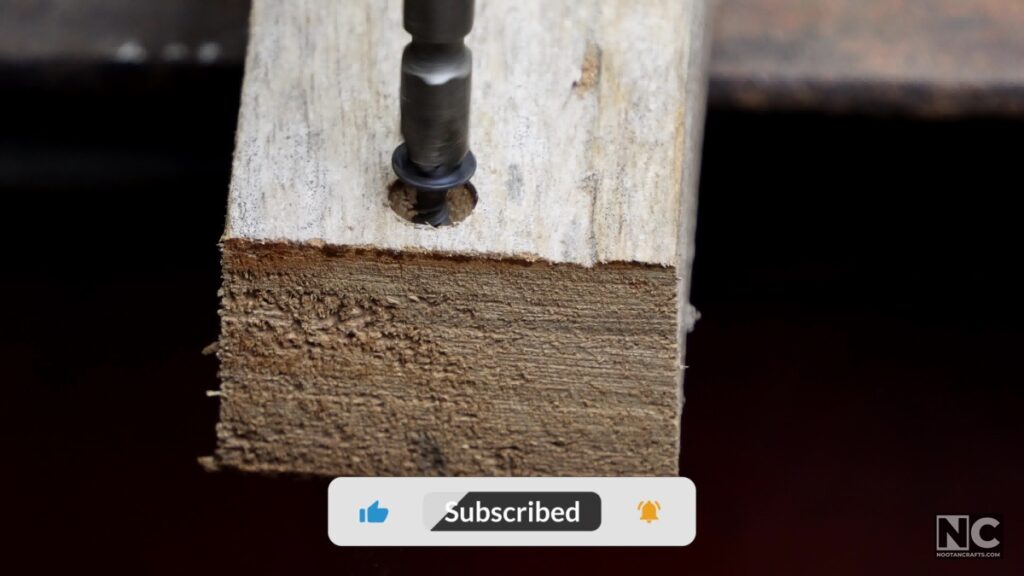
It’s a preventive measure for the future; by countersinking the screw, you eliminate the risk of wood splitting, mainly when pressure is applied because the screw head isn’t exposed. It also gives your project a clean, professional look.
General FAQs
A1: While you can use regular screws on hardwood, it’s recommended to use screws designed for hardwood, as they are less likely to cause splitting.
A2: To prevent screws from loosening, use wood glue and screws for added stability. It will help keep your project intact for the long haul.
A3: Applying pressure is generally unnecessary and can increase the risk of splitting. Instead, let the screw’s threads do the work and go slow and steady.
A4: Yes, you can fix split wood. Apply wood glue to the split area, then clamp the wood together until the glue dries. It won’t be as strong as before, but it can still serve its purpose.
Conclusion
There you have it – the ultimate guide to preventing wood splitting when screwing. By following these tips, you can enhance your woodworking and DIY game. Remember, practice makes perfect, so keep honing your skills and enjoy your DIY adventures! Happy crafting!
If you have any questions, I am here to help you, so don’t hesitate to comment!

